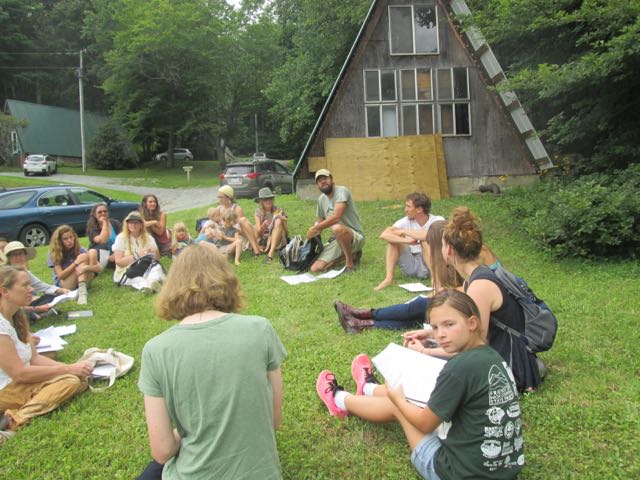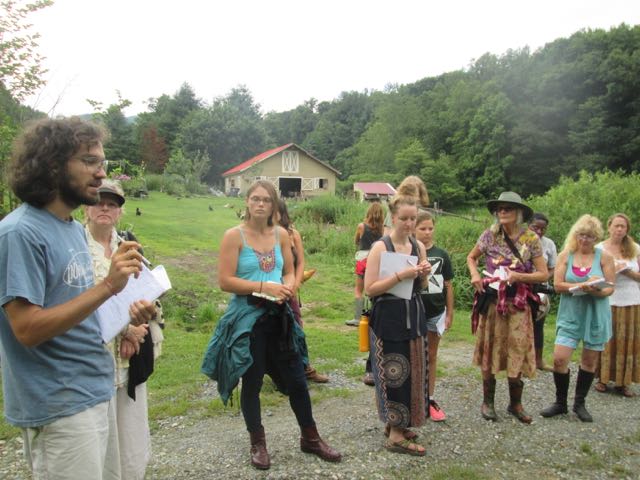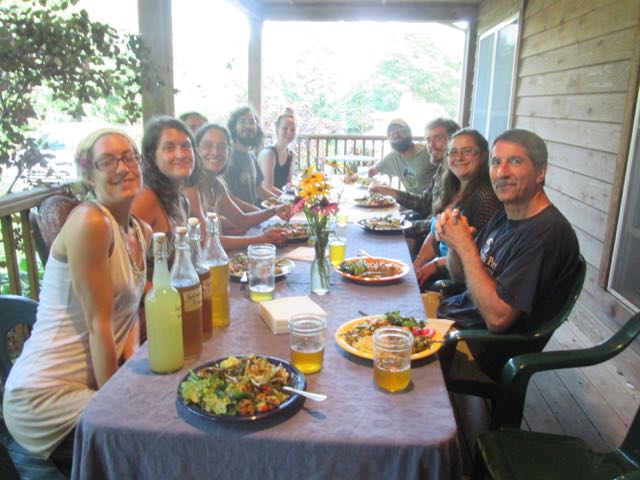
No rest for the weary, or freelance teachers! After the Wild Herb Weekend, it was off to Holly Drake’s house for a plant walk followed by a potluck.
After assembling the handouts and plant lists, we headed to Holly’s friend’s farm for a plant walk. After a slow start, we were pleasantly surprised when over 20 people arrived for the walk, not including kids. From Crataegus sp. (hawthorn) to Prunella sp. (self-heal), Oenothera sp. (evening primrose) to Osmorhiza sp. (sweet cicely), many plants were covered throughout the walk. A few herbalists and experienced foragers were in tow, so the plant walk went into more depth than most.
One bonus plant Marc spotted was Angelica triquinata, a plant endemic to central-southern Appalachian region. This plant was not covered during the plant walk due to its potential confusion with Cicuta maculata (Water Hemlock), one of the most poisonous plants in North America. Marc found a patch of Cicuta maculata at Maverick Farms, where we were staying for the Wild Herb weekend, so the potential for confusion was fresh in our minds. Even small doses of Cicuta maculata are lethal, so Marc takes much care when teaching about plants within its family (Apiaceae) and look-alikes. Though plants that can kill you with such proficiency as Cicuta maculata are infrequent, it is valuable to know these plants and their look-alikes very well for obvious reasons. As the saying goes: “There are old foragers. There are bold foragers. But there are no old, bold foragers.” While we are on the topic, this saying is particularly true for culinary mushrooms. Though foraging can and should be a fun and approachable endeavor, it is good to work with a knowledgeable teacher before experimenting with some of the harder to identify plants or fungi.

After a successful plant-walk, Holly hosted a potluck for the ages, with delicious food and more of a variety of wild-crafted sweet teas than you could shake a stick at. Thomas and his partner Rashell made incredible additions of first-harvest potato and an assortment of other dishes from their farm. Chloe treated us to an amazing curry dish she had learned while living in India for a year, and a plantain (Musa sp.)-based brownie desert. Later, Holly shared a beauty-berry (Callicarpa americana) mead she had made, adding a potential first to Marc’s ever expanding list of plants used in meads.

The day was a great reminder of the power of community and the ability of people to provide for their own great entertainment and sustenance. The variety and quality of food at these events never ceases to amaze (and satiate). It is a beautiful and constant reminder to the abundance available in the temperate world. After a good night’s rest, it was on to Peaceful Valley for the Green Scene and a visit to Turtle Island.
-By: Hayden Stebbins